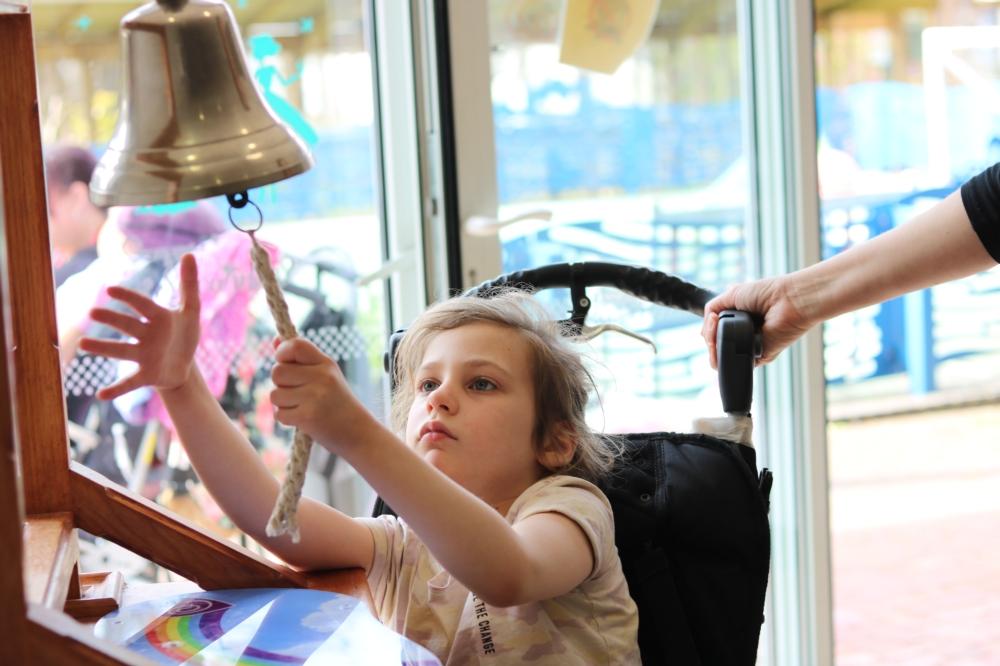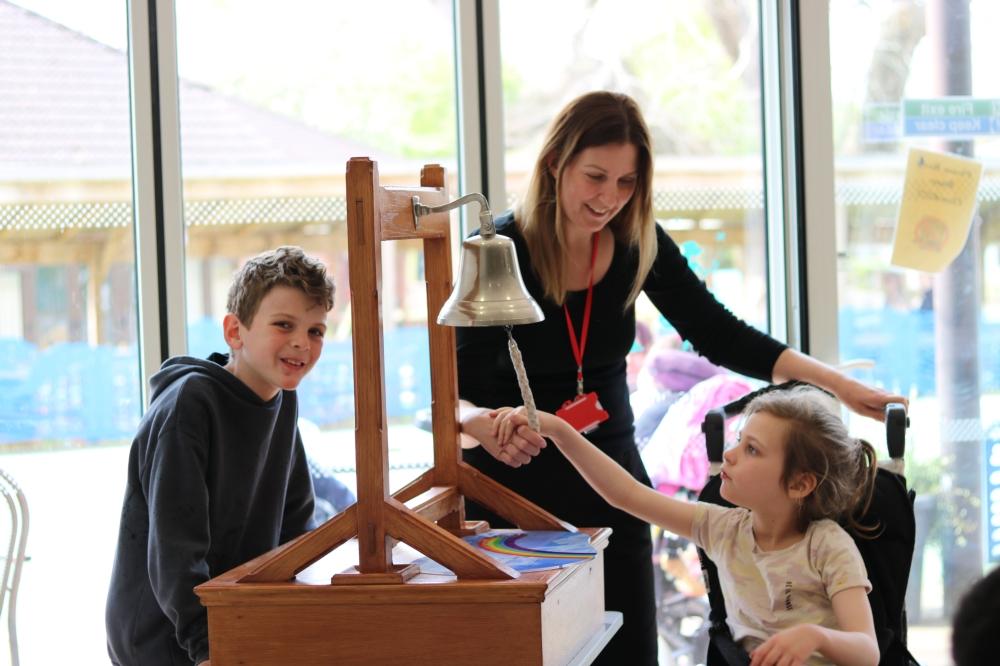Lois is epileptic, and in November 2022 Lois had a seizure at home that wouldn’t stop. We called an ambulance and she was taken straight to hospital. The seizure stopped after we arrived and we were sent to the High Dependency Unit for the night, however at 1am she had another seizure that just wouldn’t resolve. She was sedated and ventilated and we were transferred to Birmingham Children’s Hospital’s Intensive Care Unit (ICU), where we stayed for 3 or 4 days.
The days that followed
When she woke up, it was clear after 24 hours that she was not coming around as we would have expected her to. She wasn’t using the right-hand side of her body at all, and she was moving her left arm but it wasn’t intentional, it was more of a repetitive movement.
Four days later she had an MRI scan which revealed drastic swelling of the brain. We didn’t know what the long-term effects of that would be. Swelling can kill brain cells, but there was no evidence of that at that time. They gave her an intravenous course of steroids for five days to reduce the swelling, which helped by reducing the symptoms that she was experiencing – dystonia (involuntary muscle spasms and contractions) and continuous seizures.
Then it was a case of waiting to see what happened.
Specialist rehabilitation centre
The first time we heard of The Children’s Trust was six weeks later, when a physiotherapist at the hospital mentioned it. They talked about a referral, but they wanted to run it past us first as the rehabilitation centre in Surrey is far away from our home in Solihull.
We are lucky that we have family support, so we were able to come.
We thought: ‘let’s do it, let’s see if we can get there’.
Arriving at The Children’s Trust
I didn’t know what to expect when we arrived, but it wasn’t what I was expecting! It is so different to being in hospital. It was refreshing to be in such a nice environment; it’s more homely, there are more facilities here than you have on a hospital ward, and the rooms are much bigger and nicer.
It was a nice feeling when we got here.
Overcoming communication challenges
Lois has been non-verbal since the age of three, when she was diagnosed as autistic, and has limited understanding, so we have had to think outside the box to help her communicate. Prior to injury she was signing some Makaton, but now she has the right-sided weakness that has become more difficult.
Lois’ speech and language therapist introduced the Makaton symbols to her so she could make her own choices. It was challenging initially – if she saw a lot of symbols on a piece of paper she wasn’t able to distinguish them, and if she had a laminated piece of paper she would use it as a sensory toy. To overcome this, her speech and language therapist started by giving her a choice of two symbols to choose between and stuck them to a box lid so that she wouldn’t grab and play with it.
That worked really well – even prior to injury she wasn’t very consistent with that so that has really helped. Previously the symbols have been too complex for her, but here it has worked so I think that has been brilliant.
Lois is now consistently pointing and choosing to communicate her choices.
Individualised therapy sessions
Lois has had a huge mix of therapies and different involvement at The Children’s Trust. She had physiotherapy, occupational therapy and music therapy. The Multi-Disciplinary Team have had sessions with her in the soft play, and she has had play therapy.
What I have found lovely here is that the therapists all work together. Lois loves being out of her wheelchair, so when the team made sure that was part of her physiotherapy, her occupational therapist made sure her sessions took place out of her wheelchair too. It means you’re not just concentrating on one thing per session. In her play sessions they would let her get out of her wheelchair and crawl around on the mat – so she was getting play therapy, occupational therapy and physiotherapy all at the same time.

Child-centered approach
Lois has been in control in all her therapy sessions. I have been most impressed by the way the therapists have individualised the therapy for Lois.
It’s been a learning curve for us and the therapists to figure out how we can give her the opportunities to develop, rather than showing her how to do things. We want to give her the opportunity to figure challenges out herself, in her own way. It took time to get there, and our last few weeks at The Children’s Trust were fantastic for that.
Residential care at The Children’s Trust
The care staff have been fantastic. If I have to go to a meeting or pop out, a care worker can look after Lois. She is classed as one-to-one because of her behaviours and lack of danger awareness, so she will always have a care worker allocated to her daily. They are always present if I need help, and they can also assist with Lois’ personal care.
Some of the staff have been fantastic with Lois, they communicate through Makaton and will play and sing with her. It has been a good experience.
Making progress
Lois has progressed well during her placement at The Children’s Trust. When she first came, she was just starting to be able to sit up, but it wasn’t consistent. Now, she can sit up and roll over really well, and she is also starting to crawl. She is getting stronger and stronger.
Cognitively, when we first came she didn’t know what things were – if I gave her a pen, book or instrument she would put it in her mouth. Now she is using things for what they should be used for, so she will shake a shaker, draw with a pen etc.
Most importantly she has been happier. When she arrived at The Children’s Trust, she wasn’t settled or sleeping very well. Now she is back to my happy Lois, which is the best part.

The next stage
Leaving The Children’s Trust to go home is exciting and nerve wracking at the same time. Lois has two brothers, so we are happy to be back as a family again, but it is a scary time. At The Children’s Trust you have all the support around you – doctors, nurses, nutritionists, therapists – you can get your questions answered really quickly. Going home you can feel a little bit scared about not having that immediate help.
Lois attends a specialist school already. She will return there, and I know the school will continue to help us. She will have a phased return and carry on receiving the support and therapy she needs. We are hopeful it will be a continuation of her rehabilitation when she gets home.
